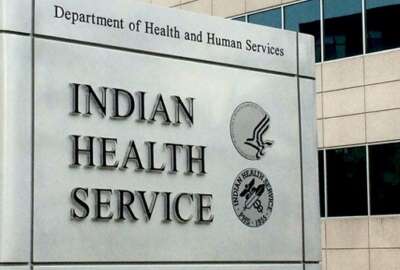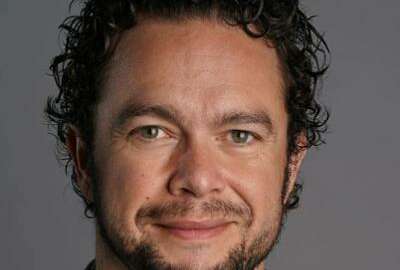Hubbard Radio Washington DC, LLC. All rights reserved. This website is not intended for users located within the European Economic Area.
The Council of Inspectors General honors one of its own
Ruth Ann Dorrill, Regional IG for Evaluation and Inspections at the Department of Health and Human Services, is this year's recipient of the June Gibbs Brown Ca...
Best listening experience is on Chrome, Firefox or Safari. Subscribe to Federal Drive’s daily audio interviews on Apple Podcasts or PodcastOne.
June Gibbs Brown, one of the federal government’s earliest inspectors general, retired more than 20 years ago. But her work lives on through and annual award given by the Council of Inspectors General on Integrity and Efficiency. This year’s award went to Ruth Ann Dorrill, the Regional IG for Evaluation and Inspections at the Department of Health and Human Services, who spoke to the Federal Drive with Tom Temin.
Interview transcript:
Tom Temin: Good to have you on.
Ruth Ann Dorrill: Thank you, Tom. Good to be on.
Tom Temin: So let’s talk about you here. And you are Regional Inspector General for Evaluation and Inspections. What does that mean? What region are you in? And what type of work do you do?
Ruth Ann Dorrill: I’m in the Dallas Regional Office, region six in HHS, and we do national reviews in the evaluation shop. And so we very often sample states outside of our region, but I’m located in Dallas with a small staff there. And our evaluation shop in HHS is across the country. And we do a full range of studies regarding HHS programs. There are over 300 programs in HHS. It’s a very broad portfolio. You know, CMS, of course, is the big one in terms of funding Medicare and Medicaid, but we also, in the HHS portfolio, have CDC, FDA, NIH, the Administration for Children and Families that does welfare programs, Child Support Enforcement, Indian Health Service. So the range of our work is extensive. We’ll do statistical reviews of claims analysis and more qualitative reviews of quality of care, patient safety and so forth.
Tom Temin: And how do the regions map against the missions, because those are all national concerns? And a lot of them are administered out of Washington. CMS is in Baltimore. So how does the regions map to what it is that HHS does with all the 50 states and territories?
Ruth Ann Dorrill: We’re just located in other places, but we work with our Boston, New York, Philly, Atlanta, KC, San Francisco offices, sort of all of a piece, you know. Washington is the company town, but there are only about 150 of us across the country. And so we just cross-pollinate and we’re as likely to be studying something in, you know, New Hampshire as we would be in New Mexico. Just over the years, I think it was maybe designed to be regionally focused. And over the years, the way healthcare is administered, just didn’t make sense for us to target our evaluation work. Now, our auditors and our investigators, because their work is often more specific to a particular provider, they do provide coverage for the states within their region. It makes more sense for the work that they do.
Tom Temin: And I guess in the Internet Age, the collaborators in fraud work across state lines and regional lines.
Ruth Ann Dorrill: Oh, you bet. It’s amazing what they do. The data analytics that we have now in the HHS OIG, it’s just nuts how, in my 26 years I’ve been in OIG, things have progressed so much. It’s so sophisticated now. Our CTO shop is cranking out numbers continually, and our agents and our auditors work across the aisle, across states. The fraudsters are always moving ahead. So we’re always mapping that out at the national and local level.
Tom Temin: I guess that’s the big change for IGs over those 25-26 year you say you’ve been working. You had computers and email back then, but computers were mainly communication devices. Now they have become, it sounds like, central analytic tools that you need in the day-to-day work.
Ruth Ann Dorrill: Yeah, it’s fantastic. I mean, we had statisticians back then who were cranking it out, and we’re lucky, particularly in national firms like Medicare, we’ve always had pretty decent data. But each year, the data improves, and then the sophistication improves. And so the way I perceive it is, it’s not that we weren’t doing some of that granular work back in the day, but it’s just so much easier now — programmable — so that we can focus. Our agents tell me that it’s still a combination of field work and analytics, you know, you can’t ever get away from that on the ground work. But I think the analytics part has just become much slicker than, you know, it was a quarter century ago.
Tom Temin: We’re speaking with Ruth Ann Dorrill, Regional Inspector General for Evaluation and Inspections at the Department of Health and Human Services. And are there any cases over the years that stand out in your mind as to why you want to be an inspector general?
Ruth Ann Dorrill: Because we do national studies, our focus is more on thematic policies across the country as opposed to specific cases. But we’ve done a lot of work that just makes me jump out of bed in the morning. It’s so gratifying. I mean, healthcare, which is not all of our portfolio, much of it, you know, is one sixth of the economy soon to be one fifth. I mean, it’s just a crazy, interesting area, and such a high impact on people’s lives. And I feel so fortunate in HHS that we’re able to look at programs that are very central to people’s quality of life. It’s interesting you mentioned that about the cases. I wanted to mention that actually I knew June Gibbs Brown. I was very fortunate. So the last five years of her career were the first five years of mine, 1995 to 2000. So I knew her, briefed her number of times. I was, of course, a newbie, and she was the top of the chain. So I didn’t know her intimately. But I certainly had very strong impressions of her and her leadership skills. And she was one of the first IGs, period. But she was one of the leaders in sort of linking casework to more systemic problems. Back in the day, you know, the beginning of IG offices, many of them didn’t even have evaluation shops that did studies nationwide. They did casework. But Jen gives Brown was one of the first people who said, hey, if we can find that something’s happening in Louisiana, or Florida, in a particular case, then chances are that that kind of thing is happening at the national level more frequently, and that we need to attack it from a policy perspective, and not just from a law enforcement perspective. So she was, you know, really first out of the gate there with the early idea of data analytics and taking a particular case example, and applying it nationally, which is what we often do.
Tom Temin: So for you, the driving factor is maybe not necessarily putting Dr. Demento behind bars, but in affecting the way the department as a whole operates over time to get better and better, and including reducing fraud and waste.
Ruth Ann Dorrill: Yes, and, you know, preemptive things, and to be able to get national rates, you know, that’s what we’re always going for. It’s what’s the prominence of a problem nationally? That’s what we in the evaluation shop are always hoping for. And then what policy is driving that? How can we incentivize providers more effectively, to provide quality care and so forth? One of the big areas of work I’ve been in for now 14 years and ongoing, we’ve been looking at the incidence of patient harm — we call them adverse events in medical care. We now have about 20 reports over the course of the years looking at that. And we’ve looked at how often the rate, the incidence, of patient harm for Medicare beneficiaries in hospitals, nursing homes, inpatient rehab, long term care, hospitals, and so forth. We’re about to go into labor and delivery for Medicaid patients. It’s been a gratifying body of work because we identified through medical chart reviews, we hire all these super impressive physicians who are able to crawl all over the medical record reviews and parse out what was happening to the patient, you know, their comorbidities, their presenting condition, from what may have hurt them in the provision of medical care. It could be anything — overdoses, an infection they acquired in the hospital, and so forth. And we found that about a third of Medicare patients are harmed in the provision of healthcare. And that’s way higher than other researchers had previously found. And some of those are small things like a rash on the skin or something. And some of them were events that contributed to death. And so we’ve spent a ton of time. A ton of my time over the last 13-14 years has been devoted to this, chronicling the incidence of patient harm, and then what policies can be changed to ensure that that harm rate goes down?
Tom Temin: And if you add it all up, I’m guessing I know the answer to this question, but it sounds like you would recommend to a young person looking for a career, that federal service and especially this type of investigative work is pretty fulfilling.
Ruth Ann Dorrill: Oh, yeah, we love it. I mean, it would be great to work for an operating division too. You know, the people in CMS, CDC, they’re actually really driving beneficiary impact. But the great thing about working for the IG’s office is that we’re able to take sort of that broad view. We’re all kind of over-analyzers. And so we’re able to take all the pieces, you knoe, we conduct interviews, we do document reviews, we look at data, and pull the story together. What’s happening, you know, what can we do? HHS drives healthcare. I mean, it just does. Medicare programs are so huge. So what can we do to improve the lives of beneficiaries, to improve healthcare, to make it more affordable. I was a high school teacher before this, and that had its own rewards in terms of, you know, direct impact with kids and so forth. But this is a fantastic job for feeling like you’re a part of moving the needle.
Tom Temin: Ruth Ann Dorrill is Regional Inspector General for Evaluation and Inspections at the Department of Health and Human Services. She is also the recipient of the June Gibbs Brown Career Achievement Award, given by CIGIE. And I should say this is in recognition of a career infused with outstanding, selfless leadership and management of innovative groundbreaking evaluations that have improved healthcare for millions of Americans. That’s the CIGIE citation. Great to have you with us. Thanks for joining me.
Ruth Ann Dorrill: Thank you, Tom.
Copyright © 2024 Federal News Network. All rights reserved. This website is not intended for users located within the European Economic Area.
Tom Temin
Tom Temin is host of the Federal Drive and has been providing insight on federal technology and management issues for more than 30 years.
Follow @tteminWFED
Related Stories
Related Stories
-
HHS AI strategy hinges on culture shift, knowledge exchange Artificial Intelligence
-
A look at the future of Healthcare IT Federal Tech Talk





